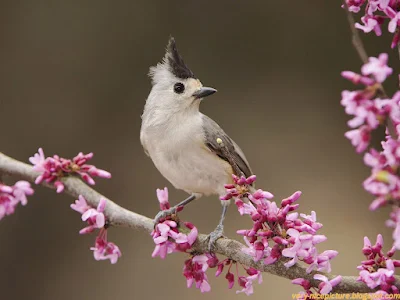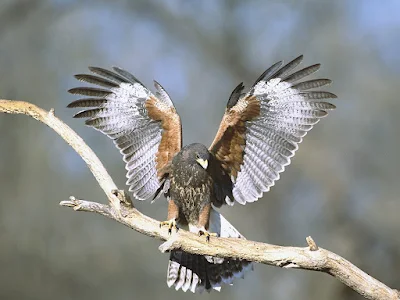What Makes Birds' Colors So Stunning? A Scientific Exploration
Birds are often admired for their vibrant, breathtaking colors. From the shimmering greens and blues of a peacock’s tail to the brilliant reds of a cardinal, birds exhibit some of the most stunning natural colors found in the animal kingdom. These colors not only enhance the beauty of birds but also play essential roles in communication, camouflage, and mating.
 | |
| A vibrant blue and yellow parrot perched gracefully on a branch, showcasing its colorful feathers in a natural setting. |
But what makes birds' colors so stunning? The answer lies in a fascinating combination of biology, chemistry, and evolution. In this article, we’ll take a deep dive into the science behind the vibrant colors of birds, exploring everything from pigments to the unique way bird feathers reflect and scatter light.
The Role of Pigments: Nature's Paints
The first factor behind birds' stunning colors is pigmentation. Pigments are natural substances produced by the bird's body that absorb certain wavelengths of light and reflect others, giving the feathers their color. There are three main types of pigments responsible for birds' colors: melanins, carotenoids, and porphyrins.
1. Melanins: Shades of Brown, Black, and Gray
Melanins are the most common pigments found in bird feathers. They produce shades ranging from black to brown and even gray. These pigments serve a functional purpose beyond color—they strengthen the feathers, making them more resistant to wear and tear. Birds like eagles and hawks often have feathers rich in melanin, which adds to their robustness.
The intensity of melanin-based colors can vary. Birds with more melanin in their feathers will appear darker, while birds with less melanin will show lighter shades of brown or gray.
2. Carotenoids: Bright Reds, Oranges, and Yellows
Carotenoids are responsible for the vibrant red, orange, and yellow hues seen in many bird species. However, birds cannot produce carotenoids on their own; they must obtain these pigments from their diet. Carotenoids are found in plants, algae, and even certain types of insects, which birds consume to maintain their bright colors.
For example, the vivid red color of a male Northern Cardinal’s feathers is a result of carotenoids obtained from the bird’s diet of seeds and berries. Similarly, flamingos get their pink color from carotenoid-rich algae and crustaceans that they consume.
The richness of a bird's color is often a direct reflection of its health and diet. A bird with a poor diet may have duller feathers, while a well-nourished bird will show off more vibrant hues. This makes carotenoid-based coloration an important signal in mate selection, with brighter feathers often indicating a healthier and more attractive mate.
3. Porphyrins: Uncommon Reds and Greens
Porphyrins are less common pigments that produce reds, browns, and greens in bird feathers. These pigments are formed through the breakdown of hemoglobin, the oxygen-carrying molecule in blood. While not as widespread as melanins and carotenoids, porphyrins are responsible for some of the more unusual colors in bird species like owls and pigeons.
Porphyrin-based colors can even fluoresce under ultraviolet (UV) light, adding a new dimension to the bird’s appearance that humans cannot see but other birds can detect.
Structural Colors: The Magic of Light Reflection
While pigments are important, they’re not the only factor behind birds’ stunning colors. Many birds owe their brilliant hues to the structure of their feathers, which interact with light in unique ways to create iridescent and metallic colors. These are known as "structural colors."
Unlike pigments, structural colors do not come from substances within the feathers but from the way light interacts with the microscopic structure of the feather surface. This phenomenon creates colors that can change depending on the angle of the light and the observer.
4. Iridescence: Colors That Shift and Shine
One of the most striking examples of structural coloration is iridescence. Iridescent colors are seen in birds like peacocks, hummingbirds, and starlings, whose feathers shimmer and shift in color depending on the angle of light. This effect is caused by microscopic layers of keratin (the protein that makes up feathers) that interfere with incoming light waves. As the light reflects and refracts off these layers, different colors emerge.
For example, a hummingbird may appear to have bright green feathers when viewed from one angle, but those same feathers might shift to a deep blue or even purple when viewed from another angle. This dynamic, shimmering effect adds an extra layer of beauty to the bird's appearance.
5. Non-Iridescent Structural Colors: The Blues and Greens
While iridescent colors change with the angle of light, some structural colors remain consistent, such as the vibrant blues found in many bird species like blue jays and kingfishers. Interestingly, there is no true blue pigment in birds. Instead, the blue color is created through the scattering of light.
Feathers that appear blue are composed of microscopic air bubbles and keratin fibers that scatter shorter wavelengths of light (blue) while absorbing longer wavelengths. This phenomenon is similar to the way the sky appears blue due to the scattering of sunlight by atmospheric particles.
The same principle applies to many shades of green in birds. In some cases, green feathers result from a combination of yellow pigments and blue structural colors.
Evolutionary Benefits of Coloration
Birds' stunning colors are not just for aesthetic purposes; they serve important evolutionary functions. Over millions of years, birds have evolved vibrant coloration to enhance their survival and reproduction.
6. Camouflage: Blending Into the Environment
For many bird species, coloration provides an essential function in camouflage. Birds that need to avoid predators often have muted colors that help them blend into their environment. For instance, the brown and green patterns on a quail or the speckled feathers of a woodcock allow them to remain hidden from potential threats.
On the flip side, some birds use bright colors to mimic their surroundings. Tropical birds, for example, may have vivid greens and reds to match the dense foliage and flowers of their environment, helping them blend into their habitat.
7. Mate Selection: The Power of Attraction
One of the most significant reasons birds have evolved such striking colors is to attract mates. In many species, males display brighter, more vibrant plumage compared to females. This is especially true in species where females choose mates based on physical characteristics.
For example, in peacocks, the male's colorful and elaborate tail feathers are used to attract females during mating displays. The size, vibrancy, and condition of the tail feathers are seen as indicators of genetic fitness. The brighter and more extravagant the display, the more likely the male is to attract a mate.
Birds like the bowerbird go even further, using their vibrant plumage alongside decorative nests filled with colorful objects to woo potential mates.
8. Communication: Signaling Through Color
Birds also use their colors to communicate with each other. Bright plumage can signal dominance or readiness to mate, while changes in coloration may indicate age or health. For instance, during breeding season, many birds develop brighter or more distinct coloring, signaling their reproductive status to others.
Some species, like the American goldfinch, undergo seasonal changes in color, with males turning bright yellow in the spring to signal mating readiness, while their colors fade during the non-breeding season.
Ultraviolet (UV) Vision: A Hidden World of Bird Colors
One fascinating aspect of bird coloration is that birds can see colors beyond the human visible spectrum. Birds have the ability to perceive ultraviolet (UV) light, which reveals a hidden layer of coloration that is invisible to us. This UV perception adds another dimension to the way birds see each other and their environment.
Some bird species have UV-reflective patches on their feathers that are used to attract mates or signal dominance. While these UV colors are invisible to human eyes, they play a critical role in avian communication.
Conclusion: The Remarkable Science Behind Birds’ Stunning Colors
Birds’ colors are a marvel of nature, blending biology, chemistry, and physics to create some of the most dazzling displays on Earth. Through a combination of pigments and structural coloration, birds have evolved to exhibit a wide range of vibrant hues that serve essential functions in survival, reproduction, and communication.
Whether it’s the deep reds produced by carotenoids, the shimmering iridescence of a hummingbird’s feathers, or the vivid blues created by light scattering, the science behind bird colors is as fascinating as it is beautiful. These colors not only capture our attention but also play a vital role in the lives of birds, helping them thrive in their natural habitats.
Next time you see a brightly colored bird, remember that its stunning colors are not just for show—they are a testament to the incredible complexity and beauty of the natural world.
 | |
| A bald eagle soars majestically above rugged mountains, showcasing its powerful wings against a clear blue sky. |
 | |
| A white pelican gracefully spreads its wings while soaring above the shimmering water. |
 | |
| A tufted titmouse perched on a redbud tree, showcasing its distinctive gray plumage and charming demeanor. |
 | |
| A close-up view of a vibrant blue and yellow parrot showcasing its colorful feathers and intricate details. |
 | |
| A bald eagle gracefully descends onto a frozen expanse of ice, showcasing its majestic wings and keen focus. |
 | |
| A red bird perched on a branch of a blooming tree, surrounded by vibrant flowers and green leaves. |
 | |
| A hawk gracefully spreads its wings while perched on a branch, showcasing its majestic feathers and keen presence. |
 | |
| A vibrant green and blue bird perched gracefully on a branch, surrounded by lush foliage. |
 | |
| A bald eagle soars above the water, with majestic mountains rising in the background, showcasing nature's grandeur. The Beauty of Bird Wallpapers |





0 Comments